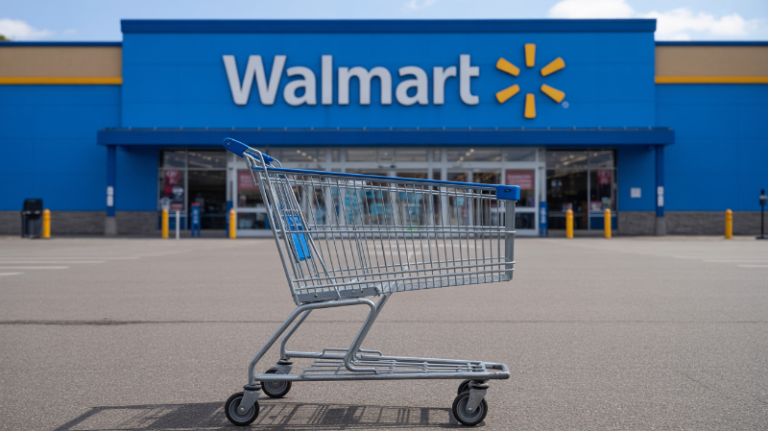The multinational retailer Walmart finds itself in the midst of a major restructuring in 2025, balancing the need to optimize profitability in a challenging U.S. market with a visible cultural shift in its holiday policies. This strategic duality sets the tone for the future of the retail industry, where operational efficiency and adaptation to digital commerce are just as crucial as corporate reputation and employee well-being.
Store Closures and the Impact of E-Commerce
Despite Walmart’s efforts to align with online shopping trends, the company has confirmed the closure of several U.S. locations deemed “unprofitable.” This move responds to underperforming financial results, rising operational costs cutting into profits, intense competition, inflation, and the growing consumer preference for e-commerce.
So far in 2025, Walmart has closed at least 11 stores across the United States as part of a restructuring plan aimed at streamlining its store network and focusing on more profitable locations. The closures affect several communities, including key states such as:
California (El Cajon, Fremont, Granite Bay, San Diego, West Covina)
Colorado (Aurora)
Georgia (Dunwoody, Marietta)
Maryland (Towson)
Ohio (Columbus)
Wisconsin (Milwaukee)
These permanent closures in 2025 involve the layoff of at least 1,500 employees. The company expects that many of them can be relocated to nearby stores or will receive assistance in finding new positions or financial compensation. Notably, some of the closed stores are located in areas with large Mexican immigrant populations, such as California and Ohio, raising concerns in local communities.
Simultaneously with this network optimization, Walmart has announced plans for future growth, including the opening of 150 new stores over the next five years. The company insists this strategy does not represent a decline in overall sales, but rather a commitment to operational efficiency and digital expansion, aimed at improving the online shopping experience.

Holiday Closures: A New Retail Tradition
In contrast to the closure of unprofitable stores, Walmart has also adopted a massive—but temporary—shutdown of its more than 4,000 U.S. locations. This closure, however, is part of a new corporate policy: the company will close for 24 hours on Thanksgiving Day (Thursday, November 27, 2025) and Christmas Day (Thursday, December 25, 2025).
What began as an exceptional measure in 2020 during the COVID-19 pandemic has now become a permanent fixture of Walmart’s corporate culture, promoting traditional American values and allowing employees to spend time with their families. John Furner, Walmart U.S. CEO, stated that the old practice of opening on Thanksgiving Day “is now a thing of the past.”
The Thanksgiving closure means that customers will need to plan their shopping ahead of time, as banks, government offices, postal services, and most major supermarkets operate with reduced hours or close altogether. Nevertheless, to maintain customer satisfaction, Walmart will promote early online discount events, with the first Black Friday sale taking place from November 14–16, and a second online event running from November 25–27.

The Contrast: Walmart de México y Centroamérica
To understand the scale of Walmart’s global operations, it’s essential to look south of the border. Walmart de México y Centroamérica (Walmex) operates as the company’s Mexican subsidiary and is the only Walmart division publicly traded independently from the United States (listed on the Mexican Stock Exchange since 1997).
Walmex is Mexico’s largest private employer (with over 190,000 jobs as of late 2016) and the country’s third-largest company by sales volume. By the end of 2016, the subsidiary operated 2,291 retail locations in Mexico and 731 stores across five Central American countries (Guatemala, El Salvador, Honduras, Nicaragua, and Costa Rica). Financially, Walmex reported revenues of MXN 736.0 billion (USD 39.9 billion) and a net profit of MXN 44.1 billion (USD 2.39 billion) in 2021.
While Walmart U.S. is downsizing parts of its brick-and-mortar network to improve operational efficiency, Walmex’s stability—even amid historical controversies, such as the $24 million bribery allegations in 2012 over construction permits in Mexico—highlights the diverse challenges and opportunities facing the global retail giant.
Balancing Profitability and Corporate Image
Walmart’s path forward in 2025 is clear: cut losses where physical retail is unsustainable or inefficient, expand where growth potential exists, and at the same time, project a corporate image that values rest and family for its more than 4,000 U.S. stores during the holidays. It’s a complex balancing act in which the old retail infrastructure merges with the growing need for digital efficiency and social responsibility.



